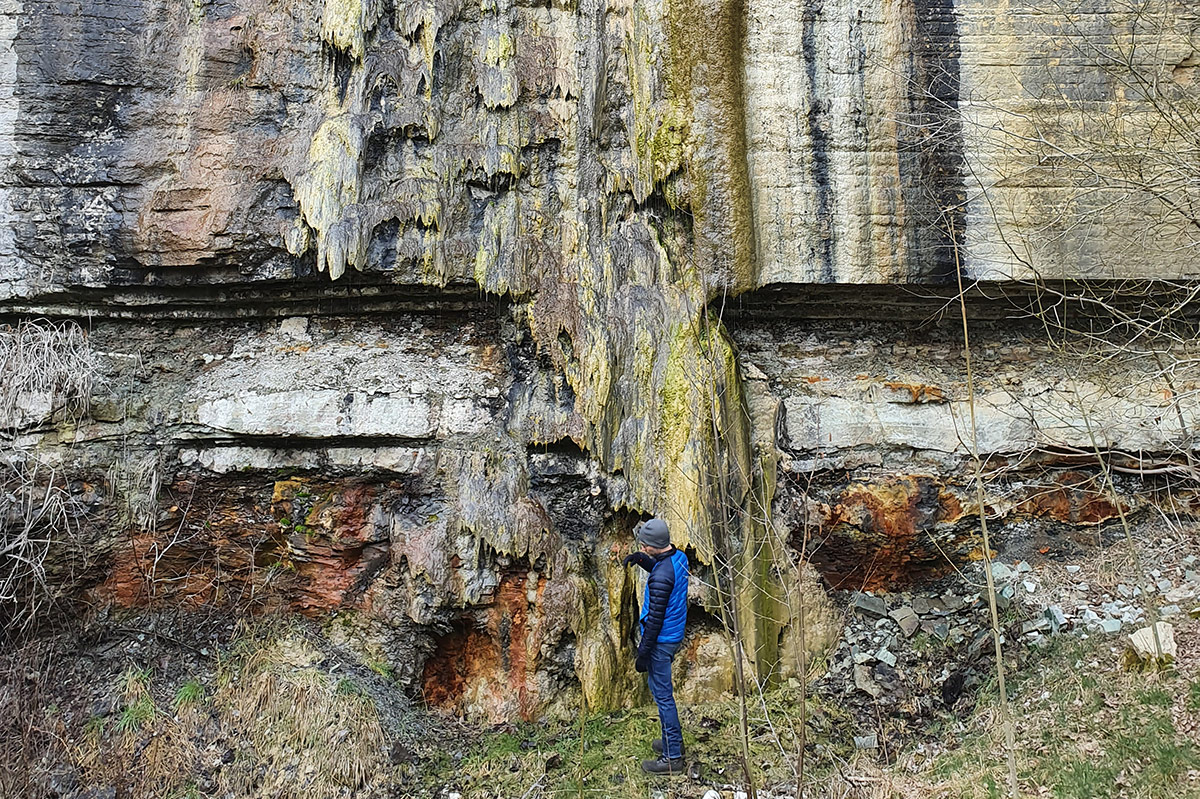
It is an old limestone quarry where large quantities of tufa have formed along the quarry walls. The nature reserve has been protected since 1927 because of its special geology. The limestone quarry continues to the south and tufa is abundant throughout.
Tufa is a white or yellowish porous rock that consists of calcium carbonate. It is formed when water dissolves calcium as it flows through calcareous rock. As the alkaline water reaches the surface, calcium carbonate is precipitated. The precipitate can encapsulate plants and other materials that happen to be in its path. When there is much precipitation, it will create tufa and it may contain plant parts and other objects. This process shows us how fossils are created. When the biological material has disappeared, the imprints are left as cavities in the tufa. These imprints are often very detailed, and studies of plant imprints in tufa have been of great importance to our understanding of how our flora wandered in.


